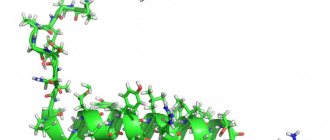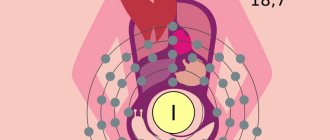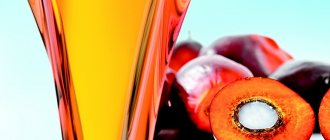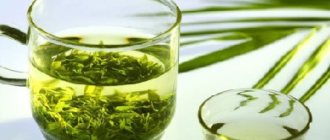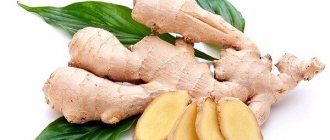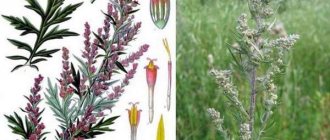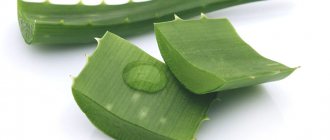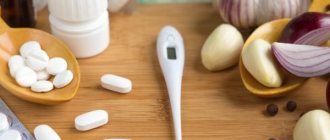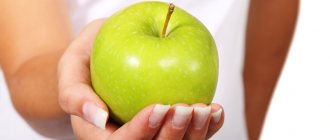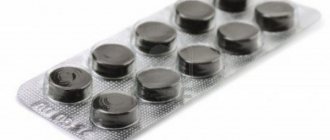No one will deny that human health directly depends on a balanced and proper diet. And it includes not only the consumption of proteins, fats, carbohydrates and vitamins, but also a sufficient amount of fiber. You can find out how fiber is beneficial for the human body from this article. It should be noted that this component is not produced by the body on its own. We can get it only by consuming certain foods. Therefore, further we will also take a look at which foods contain fiber.
Fiber for humans: concept and types
Before moving on to the question of how fiber is beneficial for the human body, let's figure out what fiber is and what types there are.
Dietary fiber or cellulose refers to all the pulp of plants and their shell. Different types of plant foods contain different types of fiber. Each of them has its own structure, and therefore different value for the body. But fiber is indispensable for the body for metabolic and digestive processes in any form. Stomach enzymes do not digest fiber, but microorganisms and beneficial bacteria in the intestine do an excellent job of this.
There are semi-soluble, insoluble and, accordingly, soluble types of fiber:
- Cellulose is an insoluble whole fiber. Found, as a rule, in the shells of cereals. On store shelves it can often be found under the common name “bran”. This insoluble fiber is important for the body due to its effect on the digestive tract. As a result, this type prevents the retention of already processed food, improves the peristalsis of intestinal structures and protects the mucous membrane from the absorption of pathogenic elements into the walls of the gastrointestinal tract.
- Gum - refers to soluble types. The peculiarity of gum is that it can only be found in those products that are made from dried legumes and oats. This fiber is important for the body due to its enveloping properties, which helps slow down the absorption of glucose.
- Pectins are light soluble fiber, which is rich in vegetables and fruits. Helps remove heavy metals from the gastrointestinal tract and gives a feeling of fullness.
- Hemicellulose is a semi-soluble type. A substance of this type retains water in the body and effectively absorbs toxic compounds. Therefore, such fiber is indispensable for the body because it normalizes cholesterol metabolism, preventing atherosclerosis. You can find the component in oat and barley grains.
But why does the body need fiber and can it be replaced?
What is fiber?
Fiber is indigestible dietary fiber that is found only in plant foods - cereals, vegetables, fruits, legumes, nuts. Fiber does not provide energy to the body in the form of calories or vitamins and minerals. It is not digested in the stomach. The process of fiber breakdown occurs in the intestines. Some of its types are not broken down at all, but play an important role in cleansing the body, working as a kind of brush in the intestines. Cabbage and carrot salad, rich in fiber, was not for nothing called “Metelka” in Soviet canteens.
What are the benefits of fiber for the human body and possible harm?
To answer the question of how fiber is beneficial for the body, you should find out its basic properties and functions.
First of all, soluble fiber takes a long time to digest, which keeps you full for a long time. The substance slows down the absorption of sugar, reduces cholesterol levels and effectively removes metals and toxins. But insoluble fiber improves digestion processes and gently cleanses the gastrointestinal tract of pathogenic compounds.
The benefits of fiber
But, if we describe all the properties of the substance and how fiber is useful for the human body, we cannot fail to mention the following facts:
- Prevents overeating and reduces appetite. When ingested, soluble fiber swells and completely fills the stomach, thereby reproducing a feeling of fullness. As a result, regular consumption of the element will prevent obesity and bring the stomach walls back to normal.
- Maintains normal intestinal microflora.
- Slows down the absorption of fast carbohydrates.
- Prevents the development of atherosclerosis and diabetes. Fiber is extremely important for diabetics as it lowers blood sugar levels.
- Starts the work of intestinal digestive enzymes.
- Promotes quality weight loss by reducing fat deposits and cleansing the intestines. Sometimes just increasing your daily fiber intake by 30% is enough.
- Gently cleanses the intestines and, by swelling, pushes out stagnant and digested food in the form of feces, waste, metals and toxic compounds. Also, regular consumption of plant foods rich in various types of fiber prevents the risk of colon cancer.
- It prevents intestinal diseases and cures many of them. The fiber in flax can restore the intestinal walls, envelop them and protect them from the harmful effects of toxins. Fiber is also capable of healing cracks and wounds in the mucous membrane and eliminating inflammation.
- Removes toxic substances from natural feces.
- Prevents the formation of stones in the structure of the gallbladder.
The best option is to consume raw fiber in the form of fruits and vegetables. Because during heat treatment a significant part of the substance is destroyed. It is not worth replacing fiber with juices and concentrates, since industrial drinks contain almost no plant fiber in their composition.
Damage to fiber
The harm of fiber depends on its source. For example, different types of fiber can cause:
- food allergies
- laxative effect on the gastrointestinal tract
- worsening liver pathologies
- flatulence
Pharmaceutical fiber has its own nuances in use. It can lead to colitis, diarrhea, and impair the absorption of important microelements. For example, iron, zinc, magnesium, beta-carotene, vitamin B2, minerals.
Important! Fiber absorbs a lot of fluid entering the body. Which can lead to constipation and dehydration. Therefore, you should drink more fluid when eating foods rich in fiber.
As a result, we see that fiber is extremely beneficial for humans. And use within reasonable limits has virtually no contraindications. But people with intolerance to this substance should use it with caution. And also for those who have gastrointestinal diseases. For example, a stomach or duodenal ulcer.
Harm from excess consumption
But with excessive consumption of dietary fiber, a number of disorders may develop, caused either by increased intestinal motor function, or, conversely, by fecal retention and activation of fermentation and putrefaction processes:
- flatulence;
- spasmodic pain along the large intestine (lower abdomen);
- bowel disorders such as diarrhea or constipation;
- weight gain (usually temporary);
- development of intestinal obstruction;
- a critical decrease in blood glucose (relevant for patients with diabetes mellitus taking hypoglycemic therapy).
In order to prevent the development of the described adverse reactions, it is recommended to normalize the consumption of dietary fiber and maintain adequate qualitative and quantitative composition of the diet.
What foods contain fiber and where is the most fiber found?
When wondering where the most fiber is found, you can most often find information that it is bran and legumes. Indeed, bran contains about 44% of the substance per 100 g of product. Essentially, this is the hard shell of the grain - pure dietary fiber. From legumes, for example, beans - 16 g, lentils - 15.6 g (per 100 g of product). Flaxseed and whole grain cereals (for example, pearl barley, buckwheat and oats) - they contain up to 10-30 g of fiber per 100 g of dry product. But these are not all sources of fiber in foods.
Knowing how fiber is beneficial for the human body, let’s find out where the most fiber is found. As a result, once you know which foods contain fiber, you can usefully diversify your menu.
Important! The highest fiber content is found in the outer shells of foods. For example: peel, leaves, stems.
Among the foods rich in fiber are:
- dried fruits;
- peas;
- pumpkin;
- potato;
- fresh fruits;
- sweet potatoes - yams;
- carrot;
- lettuce leaves;
- cucumbers;
- whole grains;
- tomatoes;
- unprocessed grain products;
- bran.
It is important to consider that the percentage of fiber in fruits and vegetables depends on the type of plant and the method of its cultivation, processing and production technology, if this concerns cereals and grains.
For clarity, pay attention to the comparison table, which foods contain fiber and where the most fiber is found.
Tips for getting enough dietary fiber
- For breakfast, it is recommended to eat oatmeal or muesli with yogurt and fresh fruit.
- During lunch and dinner, half of your food should be vegetables.
- Sometimes we snack on fruit, raw vegetables and whole grain bread, preferably along with a protein such as yogurt or cheese.
- Add beans to salads and soups.
- You can add a few slices of avocado to your salad or sandwiches.
- Replace unhealthy carbohydrates such as bread with whole grains such as brown rice, whole wheat pasta, quinoa and whole grain bread.
- You can try a new high fiber recipe.
You can also purchase dry fiber from bran, oatmeal, wheat, Jerusalem artichoke in its pure form or with the addition of pieces of fruit. The choice of such products today is huge, and the fiber in them is usually presented in the form of unrefined grains. Eating this product will be an excellent filling and healthy breakfast or low-calorie snack.
Consuming the right amount of fiber ensures a healthy body from the inside out. Analyze your diet and, if necessary, introduce recommended fiber-rich foods. Be attentive to yourself!
Fiber intake standards for humans
The norm of fiber consumption for humans, according to domestic and foreign scientists, differs. And varies from 10 to 40 g per day. If we take average values, which, according to research, will not lead to a lack or excess of fiber in the body, then the numbers are as follows.
The daily fiber intake for children and adults is 20-30 g. But athletes who eat to gain muscle need up to 40 g of fiber per day due to a higher caloric intake and, accordingly, an increased volume of food consumed.
Unfortunately, the diet of a typical city dweller contains at least half as much fiber. But it is very important to monitor your fiber intake to prevent many intestinal diseases. Also prevent stomach problems. It is especially important to pay attention to fiber for those who want to lose excess weight efficiently and quickly.
Which company's fiber is better to choose?
This rating presents products from budget companies offering high-quality supplements at an affordable price. Basically, all these companies are located in Russia.
Let's describe each manufacturer in more detail:
- Solgar is an American supplement and vitamin company founded in 1947. She doesn’t have a lot of dietary fiber in her assortment, but the available options are considered safe due to the natural composition. They include plant components - wheat husk, plantain leaves and many others. etc., depending on the product.
- Siberian Health is a Russian brand under which products for beauty and health are supplied to the market. The company produces natural products, and among them there is dietary fiber. Her dietary supplements are cleared of excess impurities, are not harsh on the intestines, eliminate toxins and promote weight loss. The brand's products also have a beneficial effect on the skin and immunity.
- Your Health – this brand produces products for healthy nutrition. It is widely used for weight loss, eliminating constipation, normalizing metabolism, improving mood and increasing vital energy levels. The company's dietary fibers have a normal taste, do not cause discomfort after consumption and have a minimum of contraindications. In this TOP, the brand is presented in the form of “Vitamin Glade” and “Stop Appetite” products.
- Health Compass is a brand of “correct” food and weight loss products. Its range includes finely ground powdered fiber, which easily dissolves in water and does not irritate the intestinal walls. Thanks to it, you can normalize bowel movements, improve your mood, suppress your appetite and successfully lose weight. This is facilitated by the low calorie content (about 90 kcal) and low carbohydrate content (about 20 g).
- Nutriel is a brand specializing in the production of natural dietary fiber based on beets. Due to their good sorbing properties, they quickly remove the maximum amount of toxins and heavy metal salts. Thanks to this, the product is effective in detoxifying the body and is an excellent aid during weight loss. The company's products are recognized as safe due to the absence of dyes, GMOs, and flavors in the composition.
- DiaS is a budget manufacturer of products with sweeteners, which also offers fiber and bran. Their average energy value is 120 kcal, which, on the one hand, guarantees an increase in the level of vital energy, and on the other hand, promotes weight loss. The company's products have a shelf life of 1-2 years, are used economically (150 g is enough for about 2 weeks) and have a safe effect on the intestinal walls, since they are not very rough.
- Sugaroff is a Russian brand that sells products for healthy, dietary nutrition. Its powdered dietary fiber can be consumed with water, kefir and other liquids, as well as with various side dishes. The basis of the company's products is cereals, berries, fruits, that is, they are suitable even for vegetarians and vegans. Sugaroff products are widely popular among those losing weight due to their good removal of toxins, normalization of stool, and suppression of appetite.
- Siberian fiber is a manufacturer of natural health products, including dietary fiber. This is a Tomsk company whose products meet the requirements of ISO 9001 and are environmentally friendly. They contain plant components - herbs, berries, cereals, extracts, etc. They are economical in consumption due to the small daily intake (about 2 tablespoons), do not scratch or irritate the walls due to fine grinding and the ability to dissolve in liquids This rating includes two of the company’s products – the SK “FIBERia Energy” cocktail and the SK “Detox” smoothie.
The best fat burners for weight loss
Fiber food tables
Average table - by product category:
| Food categories | Fiber content, per 100 g |
| Bran | 40-45 g |
| Seeds (including flaxseed and chia seeds) | 25-30 g |
| Dried mushrooms | 20-25 g |
| Dried fruits | 12-15 g |
| Whole grain cereals (including oatmeal, buckwheat, quinoa, etc.) | 10-15 g |
| Legumes (lentils, beans, chickpeas, etc.) | 9-13 g |
| Whole wheat bread | 8-9 g |
| Various berries (blueberries, lingonberries, etc.) | 5-8 g |
| Avocado | 7 g |
| Sweet fruits (peaches, oranges, strawberries, etc.) | 2-4 g |
| Carrot | 2-3 g |
A complete table of fiber foods, indicating the percentage of the average daily value:
| The product's name | Fiber content, per 100 g | Percentage of normal |
| Wheat bran | 43.6 g | 145% |
| Dried porcini mushrooms | 26.2 g | 87% |
| Dried figs | 18.2 g | 61% |
| Dried apricot | 18 g | 60% |
| Dried apricots | 17.6 g | 59% |
| Rye (grain) | 16.4 g | 55% |
| Oat bran | 15.4 g | 51% |
| Dried peach | 14.9 g | 50% |
| Dried apples | 14.9 g | 50% |
| Barley (grain) | 14.5 g | 48% |
| Buckwheat (grain) | 14 g | 47% |
| Soybean (grain) | 13.5 g | 45% |
| Rye wallpaper flour | 13.3 g | 44% |
| Buckwheat (prodel) | 12.5 g | 42% |
| Peeled rye flour | 12.4 g | 41% |
| Beans | 12.4 g | 41% |
| Oat groats | 12 g | 40% |
| Lentils | 11.5 g | 38% |
| Buckwheat | 11.3 g | 38% |
| Wheat (grain, durum) | 11.3 g | 38% |
| Mash | 11.1 g | 37% |
| Seeded rye flour | 10.8 g | 36% |
| Wheat (grain, soft variety) | 10.8 g | 36% |
| Rose hip | 10.8 g | 36% |
| Peas (shelled) | 10.7 g | 36% |
| Pistachios | 10.6 g | 35% |
| Buckwheat flour | 10 g | 33% |
| Chickpeas | 9.9 g | 33% |
| Rice (grain) | 9.7 g | 32% |
| Raisin | 9.6 g | 32% |
| Wheat flour | 9.3 g | 31% |
| Prunes | 9 g | 30% |
| Peanut | 8.1 g | 27% |
| Barley groats | 8.1 g | 27% |
| Oatmeal | 8 g | 27% |
***
Fiber is dietary fiber from plants. Fiber-containing foods not only affect hunger, but also reduce blood glucose and cholesterol levels. Fiber is especially abundant in various seeds, green vegetables, as well as in whole grain cereals and pseudocereals. A lack of dietary fiber is characterized by both digestive difficulties and possible hormonal imbalances.
Scientific sources:
- The Nutrition Source: Fiber, source
- Fiber: How Much Do You Need?, source
- Beta Glucan: Health Benefits in Obesity and Metabolic Syndrome, source
